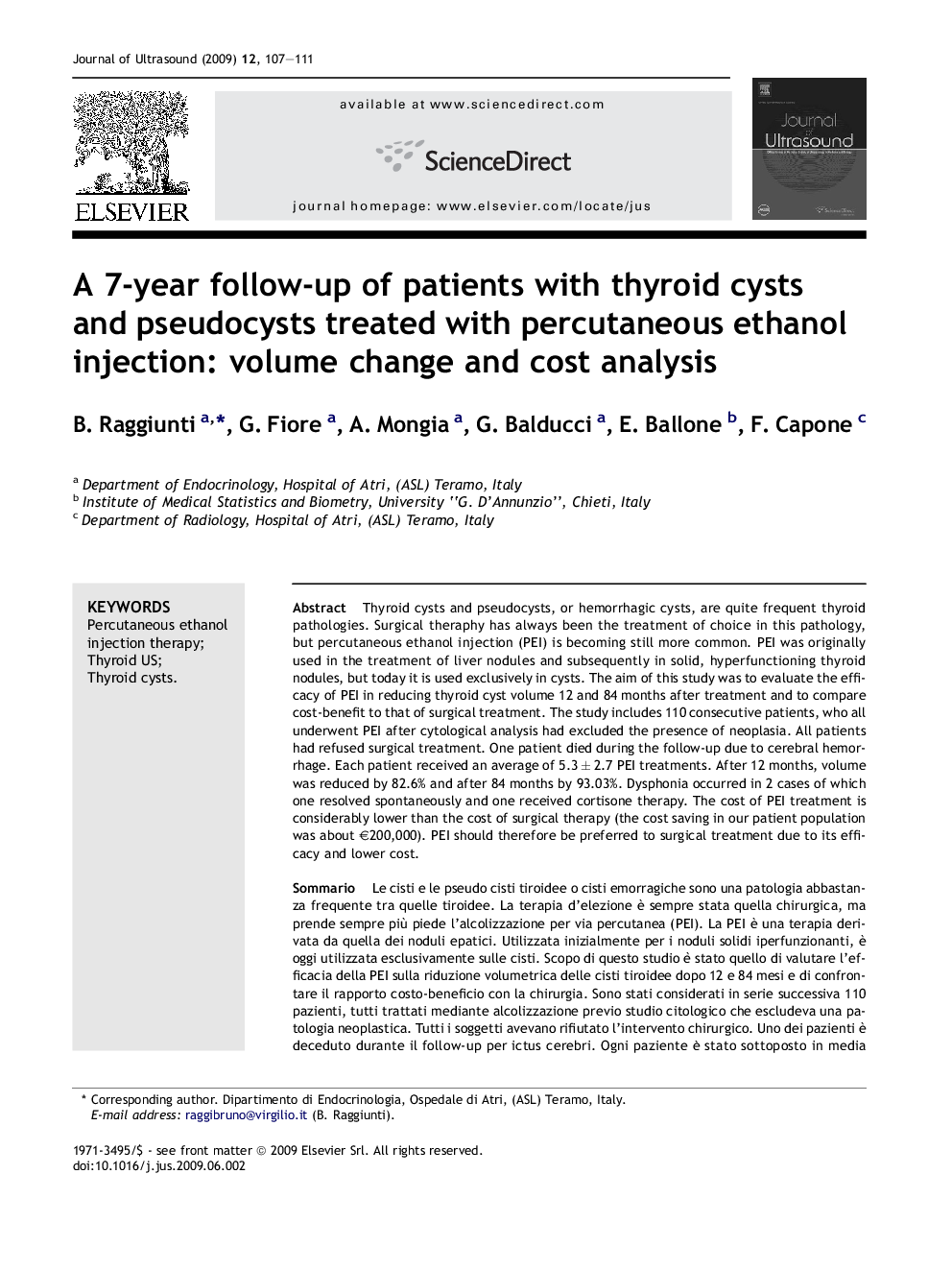| Article ID | Journal | Published Year | Pages | File Type |
|---|---|---|---|---|
| 4236919 | Journal of Ultrasound | 2009 | 5 Pages |
Thyroid cysts and pseudocysts, or hemorrhagic cysts, are quite frequent thyroid pathologies. Surgical theraphy has always been the treatment of choice in this pathology, but percutaneous ethanol injection (PEI) is becoming still more common. PEI was originally used in the treatment of liver nodules and subsequently in solid, hyperfunctioning thyroid nodules, but today it is used exclusively in cysts. The aim of this study was to evaluate the efficacy of PEI in reducing thyroid cyst volume 12 and 84 months after treatment and to compare cost-benefit to that of surgical treatment. The study includes 110 consecutive patients, who all underwent PEI after cytological analysis had excluded the presence of neoplasia. All patients had refused surgical treatment. One patient died during the follow-up due to cerebral hemorrhage. Each patient received an average of 5.3 ± 2.7 PEI treatments. After 12 months, volume was reduced by 82.6% and after 84 months by 93.03%. Dysphonia occurred in 2 cases of which one resolved spontaneously and one received cortisone therapy. The cost of PEI treatment is considerably lower than the cost of surgical therapy (the cost saving in our patient population was about €200,000). PEI should therefore be preferred to surgical treatment due to its efficacy and lower cost.
SommarioLe cisti e le pseudo cisti tiroidee o cisti emorragiche sono una patologia abbastanza frequente tra quelle tiroidee. La terapia d'elezione è sempre stata quella chirurgica, ma prende sempre più piede l'alcolizzazione per via percutanea (PEI). La PEI è una terapia derivata da quella dei noduli epatici. Utilizzata inizialmente per i noduli solidi iperfunzionanti, è oggi utilizzata esclusivamente sulle cisti. Scopo di questo studio è stato quello di valutare l'efficacia della PEI sulla riduzione volumetrica delle cisti tiroidee dopo 12 e 84 mesi e di confrontare il rapporto costo-beneficio con la chirurgia. Sono stati considerati in serie successiva 110 pazienti, tutti trattati mediante alcolizzazione previo studio citologico che escludeva una patologia neoplastica. Tutti i soggetti avevano rifiutato l'intervento chirurgico. Uno dei pazienti è deceduto durante il follow-up per ictus cerebri. Ogni paziente è stato sottoposto in media a 5.3 ± 2.7 sedute. Dopo 12 mesi la riduzione volumetrica è stata del 82.6%; dopo 84 mesi del 93.03%. Gli effetti collaterali come la disfonia con risoluzione spontanea si sono verificati in 2 soli casi. Inoltre, comparando i costi della PEI con l'intervento chirurgico si evince un risparmio (per quanto riguarda i nostri soggetti) di circa 200.000 euro. Quindi la PEI si pone come prima scelta nei confronti della chirurgia sia per l'efficacia, sia per il risparmio economico da parte del SSN.
